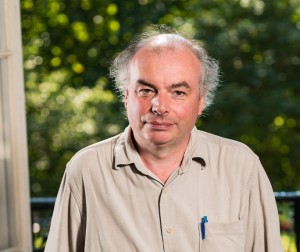This post was contributed by James Fisk, graduate administrator at the School of Business, Economics and Informatics.
 On the 28 June Birkbeck took further strides toward gender equality and equity, as the EU Project TRIGGER (Transforming Institutions by Gendering Contents and Gaining Equality in Research) invited an audience of professionals, academics and students to consider how best to inspire aspiring female professors and managers.
On the 28 June Birkbeck took further strides toward gender equality and equity, as the EU Project TRIGGER (Transforming Institutions by Gendering Contents and Gaining Equality in Research) invited an audience of professionals, academics and students to consider how best to inspire aspiring female professors and managers.
Indeed, gender inequality persists in higher education despite the many positive steps that have been made by the sector in recent years. The implementation and acceleration of Athena SWAN, as well as vocal support from leading academics and professionals, has raised the profile of gender inequality substantially. Yet a report published by the Equality Challenge Unit (ECU) in 2015 and looking at statistical data gleaned from the sector elucidates the enduring prevalence of gender inequality. In 2015, 77.6% of all Professors were male, whilst in SET (Science, Economics and Technology) subjects the figure was even higher at 81.8% (ECU).
How barriers can be overcome
The event ‘Aspiring female Professors/Managers – What can aspiring female professors/managers learn from those already in these positions?’ exists within this milieu and looked to develop dialogue, networking and solidarity to consider how such barriers can be overcome. As one speaker, Simona Iammarino, Professor of Economic Geography at the London School of Economics, remarked during the panel discussion:
“We need more than just small cogs; we need a holistic culture that lends and prides itself on both gender equality and equity.”
So, how to eradicate an inequality that is both historic and persistent? To those at the event the answer seemed to become clearer as experiences were shared among the audience and the panel. Many panel speakers discussed the necessity of having role models, with young and ambitious students, academics and professionals all attesting to the benefits of inspirational figures in the guise of mentors, line managers and colleagues.
As Birkbeck’s Professor of Entrepreneurship Helen Lawton Smith stated, “we need to understand that we’re all in this together and it is up to each of us create the support necessary for women to succeed in academia and professional roles”.

The TRIGGER event on 28 June 2016
Fostering organisational change
Birkbeck’s four year TRIGGER initiative was set up in January 2014 as an applied research project aiming to foster organisational change through promoting the role of women in research and academia. It complements several other initiatives introduced by Birkbeck to reduce gender inequality in STEMM (Science, Technology, Engineering, Medicine and Mathematics) subjects and managerial roles, such as ASTREA (Networking for women in professional and support roles), AURORA (Developing leadership skills for women) and Athena SWAN.
It is through such exchanges that commitments are made, not only to fighting disparity among gender pay and seniority, but also to fully comprehend the myriad dimensions of the struggle at hand. Indeed, until the persisting mechanisms of gender inequality are fully understood, they are doomed to perpetuate themselves. Discussions at the event ranged from the issue of age and its gendered role in the life of academics and professionals (see Fields Medal), to the challenges of younger women eager to assert themselves in male dominated professions.
The event itself embodied this sense of solidarity and commitment to gender equality, with networks forming around shared aspirations, experiences and struggles. If indeed institutions are to instigate a culture equipped to overcome inequality, it will be through a sharing of information, a proliferation of networks and through the support of key decision makers.
You can see a video taken of the event online, for those wishing to read more you can catch a summary of the panel responses posted to LinkedIn. You can read more about TriggeR and upcoming events on their website. Students interested in mentoring programmes run by the college can check out Mentoring Pathways.
Find out more
- TRIGGER project at Birkbeck
- Follow TRIGGERbbk on twitter for project updates and related information
- Courses at Birkbeck’s Department of Management




 Ideally, we would want to watch this, or any other form of molecular motion, in real time, but this is impossible because molecules are far too small: smaller than the wavelength of light, so they cannot be viewed in a light microscope. Studies of molecular structure require techniques like X-ray crystallography and electron microscopy, both of which have been used to study motor molecules.
Ideally, we would want to watch this, or any other form of molecular motion, in real time, but this is impossible because molecules are far too small: smaller than the wavelength of light, so they cannot be viewed in a light microscope. Studies of molecular structure require techniques like X-ray crystallography and electron microscopy, both of which have been used to study motor molecules.